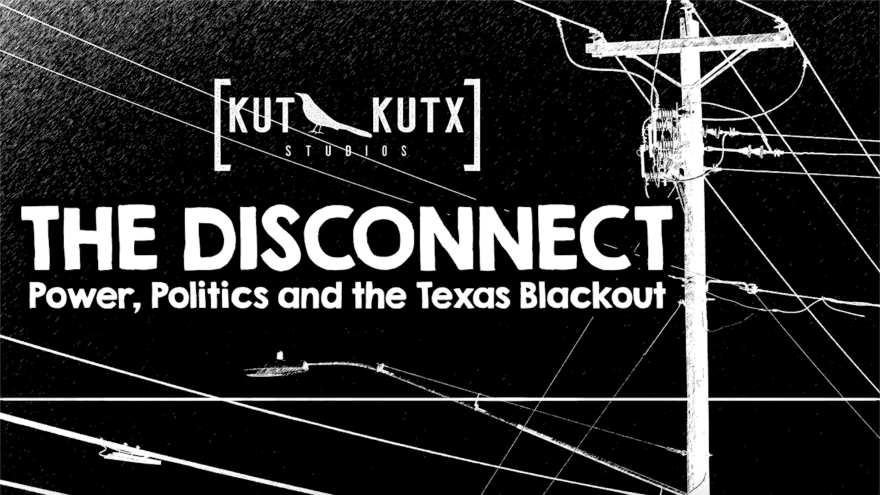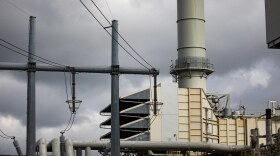Of the numerous vulnerabilities exposed by the deadly 2021 Texas blackouts, one caught people's attention more than the rest: Texas exists as an energy island.
Unlike any other power grid in the continental U.S., the energy system that serves 90% of Texans cannot share much electricity with neighboring grids. That means when the Electric Reliability Council of Texas cannot meet demand, there is no way to import enough power to make up the difference. That leaves the grid operator with no option but to cut electricity to homes and businesses to balance the system.
That is exactly what ERCOT had to do in 2021, when a historic winter storm crippled the state energy infrastructure while raising power demand to historic highs.
Now, three years after the disaster, U.S. Rep. Greg Casar, D-Austin, has filed a bill to end that energy isolation.
“This is the first bill ever in the U.S. Congress to require ERCOT to finally interconnect,“ the former Austin City Council member told KUT in an exclusive interview ahead of the bill's filing on Wednesday. “When we’re in trouble we should be able to pull in energy from our neighboring states, and when we have a surplus of energy ... we should be able to sell it to them. “
Casar’s Connect the Grid Act would mandate that ERCOT coordinate with the Federal Energy Regulatory Commission and the grid-operating organizations along the state's borders — the Southwest Power Pool, MISO and the Western Interconnection — to create high-voltage interconnections.

It further specifies a range for the number of gigawatts the new connections must be capable of transferring between grids. It says, for example, “between 4.3 and 12.6 GW of new transfer capability between ERCOT and SPP.” By some estimates, 1 gigawatt is enough to power 750,000 homes on average.
Beyond improving reliability, supporters of the plan say, the connections would reduce the cost of power to consumers by limiting energy scarcity in Texas, which drives up bills. They say it would also benefit Texas power companies, which could sell more electrons out of state, and it would help clean up the U.S. power system by unlocking more of Texas' massive renewable energy resources.
Critics will likely oppose a provision in the bill that strips Texas of its unique ability to regulate its own power grid, handing jurisdiction of the ERCOT system to the federal government.

Casar argues that move would benefit Texas consumers by giving federal regulators a say in whether state energy rates are “just and reasonable.”
“People should know that the lights are going to be kept on and people are not going to get screwed over on pricing just because we’ve decided to have this isolated grid,” he said.
Casar’s office lists several co-sponsors of the bill, including fellow Austinite Rep. Lloyd Doggett and New York Rep. Alexandria Ocasio Cortez, both Democrats.
They say Massachusetts Democratic Sen. Ed Markey will carry the bill in the Senate.
No transmission? No transition.
The bill is the most recent in a growing number of proposals to increase transmission interconnections between grids nationwide. Experts say the development is necessary to transition the country to renewable energy to fight climate change.
Michael Webber, a mechanical engineering professor at UT Austin, was consulted by Rep. Casar’s office as it drafted the bill. He had not seen a final version when he spoke to KUT, but said interconnection would allow clean energy from renewable-rich parts of the country, like Texas, to reach energy-hungry urban centers on the coasts
Webber said there can be no clean energy transition without building out more transmission.
“You’ve gotta have the ability to move the clean electrons to market,” he said.
He, and others, also say that increased access to energy from neighboring grids in 2021 would have helped ease the pain of the blackout in the final days of the freeze.
“You want a grid that is bigger than the weather. Even if it’s just a few thousand megawatts of transmission capacity, that can make a difference."Michael Webber, mechanical engineering professor at UT Austin
While energy brought in from over state lines would not have been enough to restore electricity, Webber said, it could have been enough to institute “rolling outages” earlier in the crisis, allowing power and heat to return to more people's homes for hours at a time.
“You want a grid that is bigger than the weather,” he said. “Even if it’s just a few thousand megawatts of transmission capacity, that can make a difference.”
That's one benefit of interconnection not lost on federal regulators.
The Federal Energy Regulatory Commission recently considered mandating electricity transfer quotas between regional grids. The North American Electric Reliability Corp., the industry group that develops reliability standards, has also conducted an interregional transmission study that will be brought to Congress this year.
Other bills have also been filed to spur interconnections between power grids. Those include the Big Wires Act from Colorado Sen. John Hickenlooper, which would mandate energy transfer requirements between all regional grids in the U.S. except the Texas grid.
“It skips the Texas question,” Casar said. “You can't skip out on the energy capital of the country, frankly, the energy capital of the world. We can't keep working our way around Texas. We need to interconnect Texas.”
But Texas politicians and industry have zealously guarded the state’s energy independence in the past, making interconnection with increased federal oversight a tricky political proposition.
Isolation by design
Texas’ lack of significant connections with neighboring power grids is on purpose. It was first instituted as an informal agreement between Texas electric utilities as a way of avoiding federal oversight.
Simply put, by keeping their wires on the Texas side of the border, utilities kept more regulation in the hands of Texas politicians.
In the late 1970s, one North Texas utility broke ranks and attempted to connect with Oklahoma. That provocation, known in energy lore as the “Midnight Connection,” led to lawsuits and hearings that eventually codified the relative isolation of the Texas grid into law.
While some smaller direct current connections between Texas and neighboring grids exist today, Webber said they allow for only about 1% percent — at most — of peak energy use to flow over Texas state lines.
Since the 2021 blackouts, more and more Texans have questioned that status quo. But, the idea of inviting more federal oversight remains a hard sell.
Many in the energy industry enjoy the access and influence they have with Texas state politicians and regulators versus those in the federal government.
Companies that have based their business models under the current system may feel threatened by increased competition and, potentially, increased oversight. And Texas politicians say keeping regulation in-state allows for the state to approve energy projects and in ways that would not be possible if the state fell under federal jurisdiction.
Pat Wood, a former chair of both the Public Utility Commission of Texas and the Federal Energy Regulatory Commission, said the absence of federal regulation allowed Texas to easily deregulate its energy market 25 years ago and to build out a statewide transmission system to bring wind power from West Texas to the east.
“Having that all under one state border made it a lot easier to get the permitting and construction done,” Wood told KUT News. “When I was at FERC, it was more challenging.”
Wood, who now runs the energy storage company Hunt Energy, said federal rule changes in the 1990s mean Texas is now allowed to increase connections with neighboring grids without inviting more out-of-state regulation. But until recently, there has been no money in developing new connections.
“I think ... it's better to just let things kind of make their own economics and let that drive the day rather than kind of put your finger on the scale,” Wood said.
But, Casar said, more federal oversight is exactly what is needed.
“It used to be that you had politicians that would basically say, ‘We can escape the big bad feds,’” he said. “I think that that argument starts sounding so frail when you’ve had hundreds of people die in a winter storm.”













